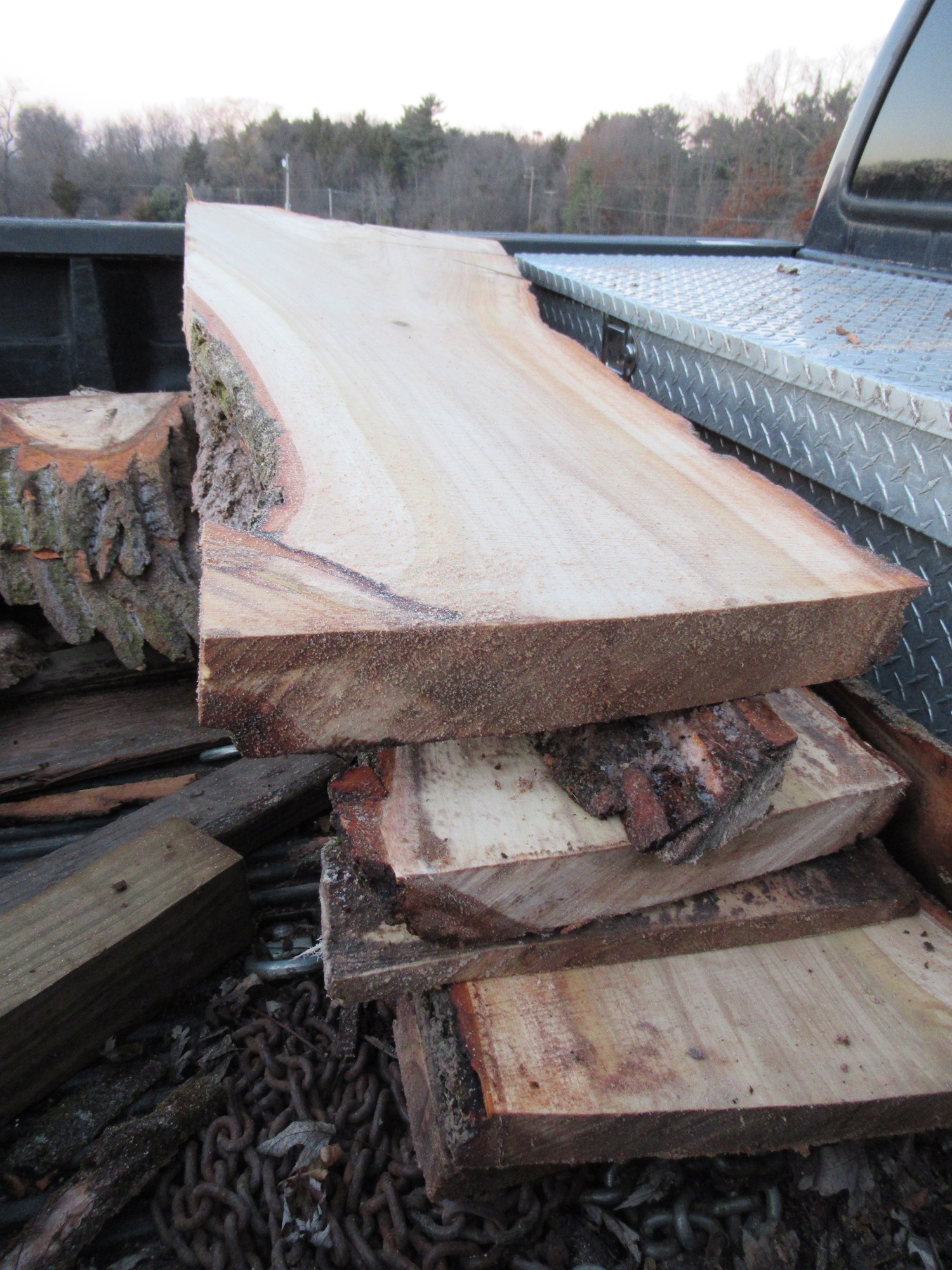The Live Edge Craze
Species, cuts, and questions to ask.
It's safe to say, everyone is in a craze over live edge wood. So, we've decided to start with the basics.

What exactly is live edge wood? It's exactly what it sounds like. It's lumber that hasn't been milled to a standard shape or size. Live edge specifically refers to the unfinished edge of the wood slab. Live edge slabs retain some of the original characteristics of the tree, both its shape and bark.
Long story short, it's the natural edge of the tree.
And while you sometimes see this with reclaimed wood, most of the live edge available right now is from freshly cut timber. Although reclaimed live edge is available, it's quite rare.
Common Wood Types
Naturally, any type of wood can fall under the live edge umbrella, but there are a few species that are the most common.
Oak: this is a very popular choice due to its affordability and availability. Oak slabs can range from a pale to dark brown in color.
Maple: this hardwood ranges from pale to dark brown in color. Maple slabs are known for having unique grain patterns.
Cherry: this type of wood is less commmon due to availability. Its coloring is typically on the paler side and ranges from tan (with a pink hue) to deep red or even brown.
Mahogany: this is another popular choice due to its deep rich and coloring. It ranges from pale to dark brown, and often has a red or reddish-brown tint.
Walnut: this hardwood is much more difficult to work with because it's one of the hardest hardwoods. However, it is popular because of its dark brown coloring and wavy grain patterns.
Hickory: this wood has a pale yellow coloring, but can darken with age. It also has a much straighter grain pattern.
Wood Cuts
There are three different live edge cuts. Slabs, slices, and burls.
Slabs are cut lengthwise from the tree and typically have live edge on two sides. Because of the length, slabs are great for tables.
Slices (also known as rounds) are cut horizontally from the tree. These have live edge all the way around. They are also a great way to showcase the growth rings. Slices are often used for side tables or other smaller pieces.
Burls are deformed tree growths that are typically large and rounded. This cut of wood is the most expensive and is highly prized because of the grain patterns and unique, bumpy edges.
The Buying Process
The first thing you should ask yourself when you're buying live edge is, "what's the purpose?" What are you going to use the live edge for? Are you making a table? A set of shelves? A fireplace mantle?
Figure that out and then consider the functionality of it. Does it need to be able to carry weight? Will you be wiping it down after a meal?
Both will affect your live edge purchase. Certain species and cuts are better suited for certain projects.
Another key question to ask is whether or not the wood has been cured and, if it has, how it's been cured (kiln dried, naturally air dried, etc.). This might be one of the most important questions because if the wood hasn't been properly cured, the wood is more likely to warp and check.
The final question is one you need to ask youself- bark or no bark?
Our Projects
There are an endless number of things you can make with live edge. We're talking countertops, shelves, mantles, tables, and more. Here are a couple of our all time favorites.